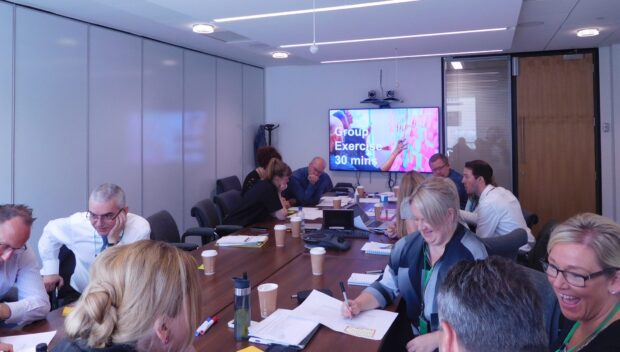The Government Digital Service (GDS) Transition team has been an industrious bunch since we formed in September 2016. For a team of just 4 people (2 content designers, a content lead and a policy and engagement manager), we’ve achieved a lot in a relatively short space of time - especially as the content designers didn’t join the team until November 2016 and January 2017.
But of course I would say that, wouldn’t I? Seeing as I’m the content lead for the team! So, I’d like to tell you about some of the work we’ve been doing so you can judge for yourself.

Earlier this year, my colleague Rob wrote about the return of transition and explained the need for us to continue this work.
I’d like to talk about how we plan and schedule transition projects, what a transition project looks like and what we’ve done so far.
How we decide who we work with
There are still lots of government websites whose content should be on GOV.UK. Many older websites were out of scope for the original transition but some of these are now in a position to move their content to GOV.UK or to close altogether.
We estimate there are around 145 live websites that are not exempt from moving to GOV.UK and should be considered for transition. There are various reasons why these websites are still live: at the time of the previous transition not all organisations were equipped to move their sites onto GOV.UK, some websites have been launched since, and others that were exempt at the time have now decided they wish to move to GOV.UK. But how do we prioritise who we work with?
Well, we use a number of factors. Firstly, we look at the user impact - how many people visit a particular website? We then look at how much it costs the department to run the website. We also consider an organisation’s readiness and willingness to work with us. For example, an organisation may wish to close a website and transition content that meets a valid user need onto GOV.UK, but it may be tied into a contract so can’t work with us in the immediate term.
Finally, we look at the complexity of the work required to assess whether we have the resource to support transition. Once we’ve considered all these factors, we rank each website and prioritise what to work on next.
Phases of a transition project
A transition project contains a number of different phases including:
- engagement - talking to departments and agencies about transition
- discovery and discovery analysis - exploring what content should be archived and what can transition
- user needs and content mapping - identifying what the user really needs the content for and mapping relevant content to those needs
- content creation and publishing - writing new content and publishing that on GOV.UK
- project handover and evaluation - handing over our project documents and processes and evaluating the impact of transition
As many of you’ll know from reading about the GOV.UK roadmap for the 2017 to 2018 financial year, no mission is longer than 3 months. So, apart from the engagement and discovery phases, the time we spend on each transition project is around 3 months. Of course we are flexible, so larger transition projects may require more time.
The transition story so far
So far we’ve worked very closely with Public Health England (PHE) supporting their transition programme. From September to April we supported them in transitioning 16 websites. We also helped them develop a prioritised plan for their ongoing transition work. The impact of this work is that nearly 4 million annual visits are likely to be redirected to new or existing content on GOV.UK.
Besides our transition project work, we also offer light-touch support to departments and agencies that want to transition. Over the last few months we’ve been supporting the Department for Education (DfE) to archive 6 of their remaining legacy websites.
In addition, we’ve supported the Home Office in their work with the Independent Chief Inspector of Borders and Immigration (ICIBI) to transition its website to GOV.UK. They successfully completed transition the end of July. With these 2 departments alone, more than 1 million annual visits will redirect to GOV.UK.
And finally, at the end of June we finished our work helping Sellafield Ltd transition their 3 websites: Sellafield Ltd, Sellafield magazine and Sellafield land quality. This transition will result in more than 1.6 million annual visits being redirected to GOV.UK.
As a result of all this work, the needs of millions of users will be much better served by content that is designed in a more user-centred way. User journeys will also be improved as duplication is reduced and unnecessary or out-of-date content is removed.
What’s next?
We’re currently working with the Ministry of Justice (MOJ) and HM Prison and Probation Service (HMPPS), helping them transition some of their content from justice.gov.uk to GOV.UK.
We’ll also continue to offer support to organisations that want to retire their websites or departments who need advice and support on their own transition projects. And of course, we’ll continue to engage widely with government departments and agencies to add to our ongoing roadmap.
Get in touch
If you’re responsible for a government website that you want to close and transition content to GOV.UK, then speak to the GOV.UK Policy and Engagement team on gov.uk-enquiries@digital.cabinet-office.gov.uk. Or if you want advice on retiring a website that is no longer needed, we can help with that too.
Amanda is Content Lead on the GDS Transition team. You can follow her on Twitter.